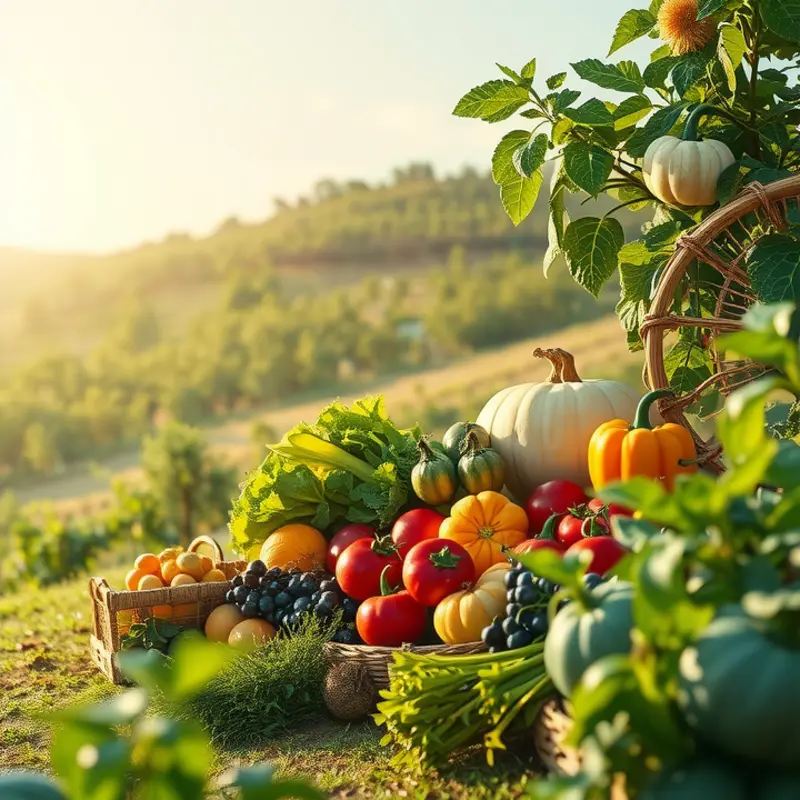Roasting is a versatile cooking method that can bring out incredible flavors in a variety of foods. Whether you’re a beginner or an experienced home cook, mastering quick roasting techniques will elevate your culinary skills beyond the ordinary. With just a few tips and tricks, you can achieve beautifully roasted vegetables, meats, and even fruits, all while preserving their natural moisture and taste. Let’s dive into mastering these impactful techniques.
Choosing Ingredients for Optimal Roasting

Selecting the right ingredients is a cornerstone of effective roasting. To elevate your home cooking, it’s essential to understand how different ingredients respond to this technique, ensuring that both flavor and texture are maximized.
Let’s begin with meats. The key to choosing the right cut lies in the balance of size, fat content, and freshness. For optimal roasting, look for cuts with moderate marbling, such as chuck roast or pork shoulder. These cuts ensure a flavorful and juicy result, as the fat renders down during roasting, imparting a richness to the meat. Experiment with different sizes to suit your roasting method; larger cuts benefit more from slower, longer roasting, allowing for the most tender outcomes.
Vegetables offer a canvas of possibilities in the roasting realm. Root vegetables like carrots, parsnips, and potatoes are classics due to their robust structure and natural sweetness that caramelizes beautifully at high temperatures. Consider the size of your vegetables too; uniform pieces ensure even cooking and prevent some pieces from drying out while others are undercooked.
Pairing vegetables with complementary flavors enhances the roast further. Try coupling sweet potatoes with aromatic rosemary and garlic, or accentuating the earthiness of beets with a drizzle of balsamic vinegar. Seasonal vegetables not only ensure freshness but often offer superior taste. In the fall, think squash and Brussels sprouts; spring brings asparagus and artichokes to the table.
Fruits, although less common in roasting compared to meats and vegetables, can be a delightful addition to any roast. Hard fruits like apples and pears work exceptionally well, softening yet retaining their shape while gaining a syrupy sweetness. Fruits can complement both savory and sweet elements, especially when paired with meats like pork or poultry for a balance of flavors.
Understanding the seasonal availability of your ingredients can make a significant difference in the flavor profile of your roast. Seasonal produce not only supports local agriculture but ensures you’re working with the freshest ingredients possible, intensifying both taste and aroma in your final dish.
In addition to seasonal considerations, think about the storage of your ingredients to maintain their freshness. Proper storage contributes to food safety and can significantly reduce waste in your kitchen. For further guidance, explore safer storage of sauces which can complement your roasted dishes, enhancing depth and complexity in flavor.
Ultimately, mastering the art of roasting is about understanding and experimenting with different ingredients, their characteristics, and how they interact in the oven. With the right choices, roasted ingredients transform from simple components into a symphony of flavors and textures that elevate everyday cooking to something truly extraordinary.
Mastering Techniques for Quick Roasting

Perfecting the art of quick roasting begins with a thorough understanding of your oven. Pre-heating is a crucial first step. Allowing your oven to reach the desired temperature before inserting your ingredients ensures even cooking and maximizes flavor retention. A consistent heat level is essential, so investing in an oven thermometer to verify your oven is crucial, as many ovens can be off by 5–10 degrees.
Once your oven is ready, consider the appropriate cooking times for various ingredients. Denser vegetables like potatoes or carrots require more time compared to lighter produce such as asparagus or bell peppers. Similarly, different meats necessitate distinct roasting durations—poultry typically demands a higher temperature for shorter periods, while red meats benefit from slower, lower heat to achieve tenderness without drying out. Use visual cues like browning and aroma as well as internal temperature checks to confirm doneness.
Herbs, spices, and oils are fundamental in crafting flavorsome roasted dishes. Coating your produce or meat with a thin layer of oil not only prevents sticking but also helps in achieving a crispy texture. Experiment with various oils such as olive, avocado, or grapeseed for diverse flavor profiles. Remember, adding herbs and spices early in the cooking process allows the flavors to meld beautifully. Consider using rosemary and thyme for earthy notes or paprika and cumin for a more robust taste.
Crafting simple, effective marinades can elevate your roasting game. A basic marinade includes an acid (such as vinegar or lemon juice), oil, and your choice of spices or herbs. The acid helps tenderize the meat while infusing distinct flavors. Letting your meat marinate for as little as thirty minutes can make a significant difference, but for deeper flavor penetration, consider marinating overnight in the refrigerator. For more insights on maximizing flavor without excess salt, review flavor boosters without salt.
Arranging ingredients properly on the baking sheet is pivotal. Overcrowding can lead to steaming rather than roasting, so maintain sufficient space between ingredients to allow for proper air circulation. Opt for a single layer to ensure everything cooks evenly. Additionally, flipping items halfway through their cooking time promotes uniformity in texture and color.
Checking for doneness is an art in itself. Visual cues like caramelization and a slight crispness are good indicators. Trusting your sense of smell is also helpful; beautifully roasted items emit an inviting aroma when ready. For meats, rely on a meat thermometer to ensure they’ve reached a safe internal temperature—at least 165°F for poultry, for example.
Mastering these quick roasting techniques will transform your everyday meals into culinary delights with minimal effort. As you grow more comfortable with these skills, you’ll find preparing delicious meals for your family or guests becomes a delightful task rather than a chore.
Final words
Quick roasting techniques not only enhance your dishes but also simplify meal preparation, making cooking a more enjoyable experience. By selecting the right ingredients and mastering effective roasting methods, you can create an array of delicious meals that impress family and friends without extensive effort. Remember, the key to successful roasting lies in knowing your ingredients and applying the right techniques. With time, patience, and a bit of practice, quick roasting will become a go-to method in your culinary repertoire. Feel empowered to experiment and unlock new flavors with every roast.







